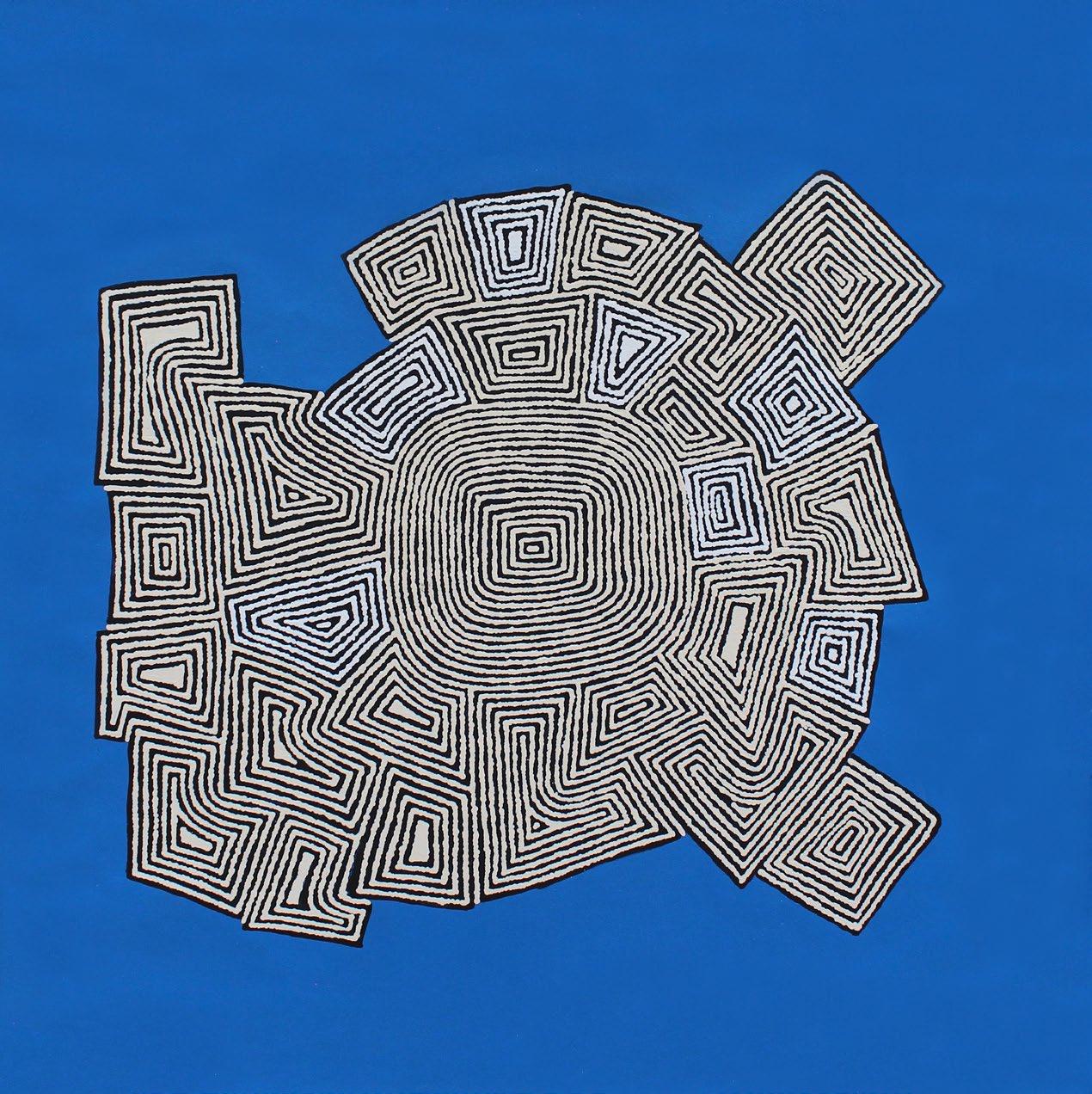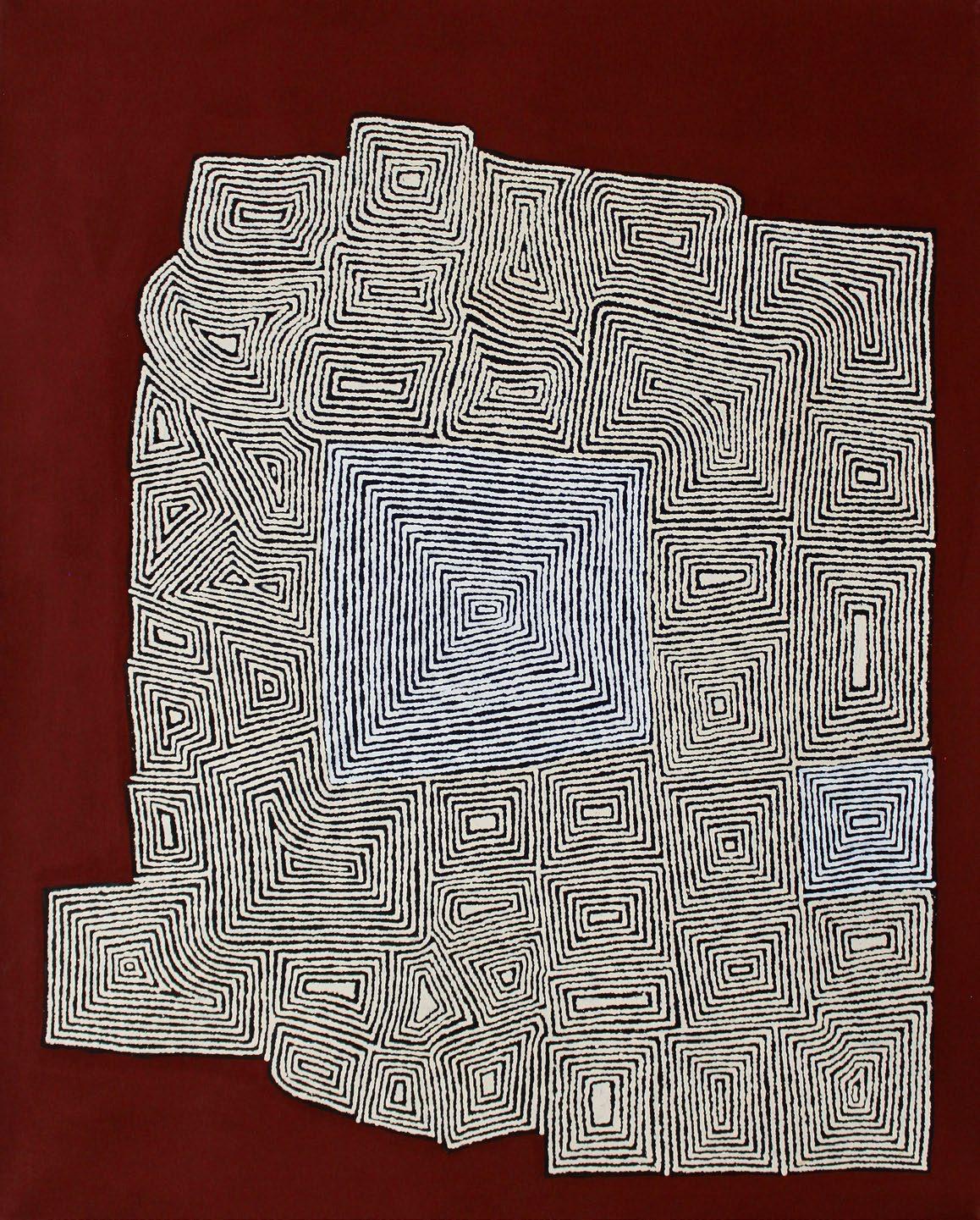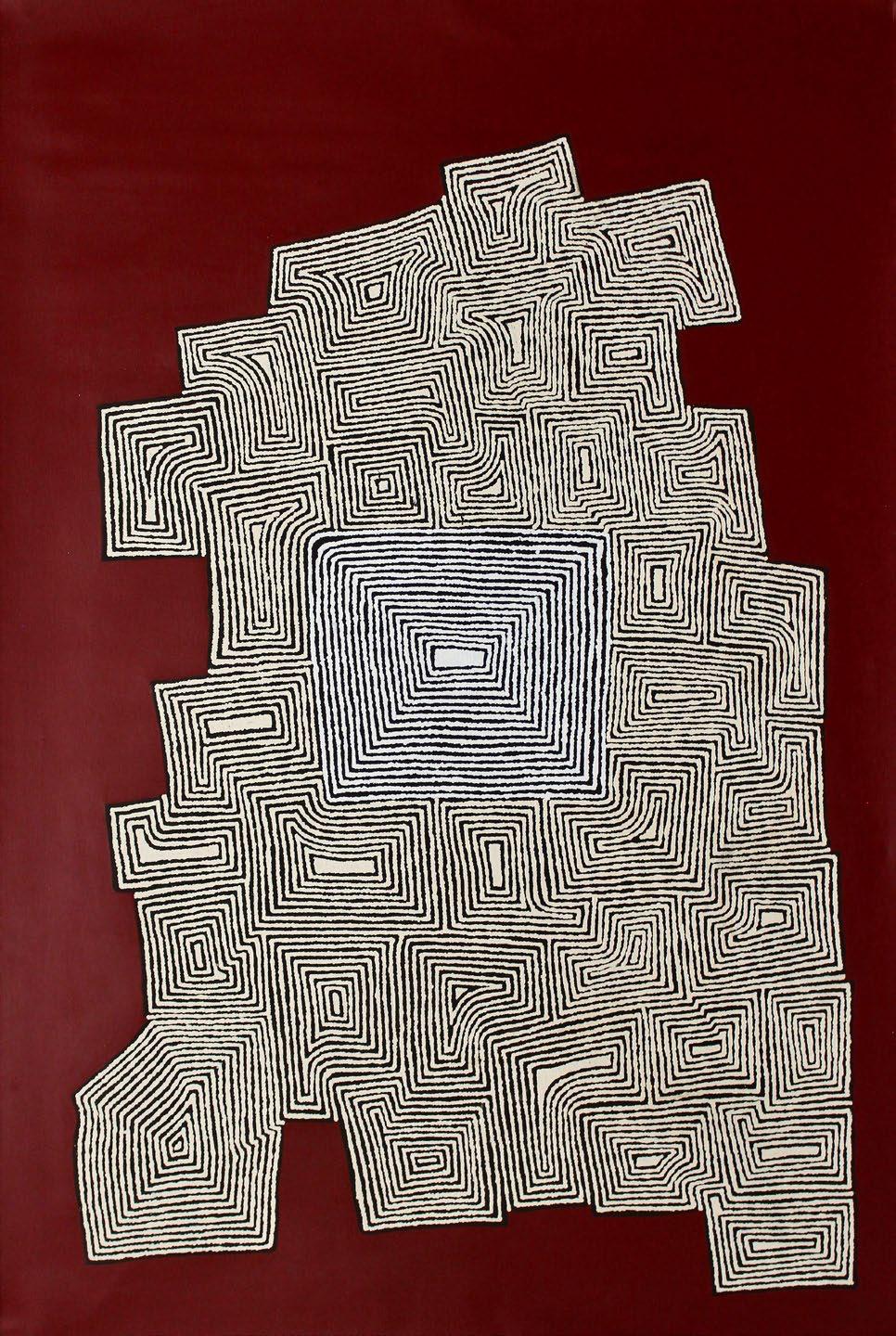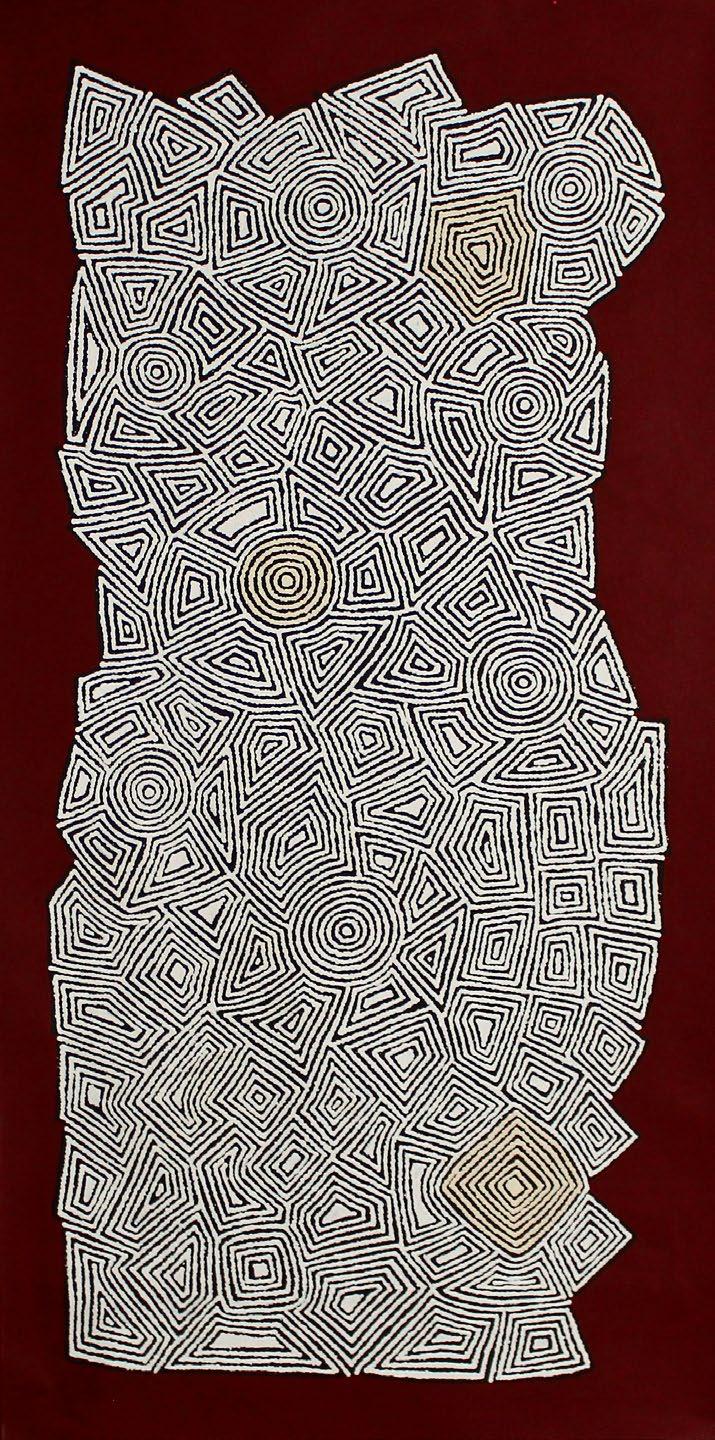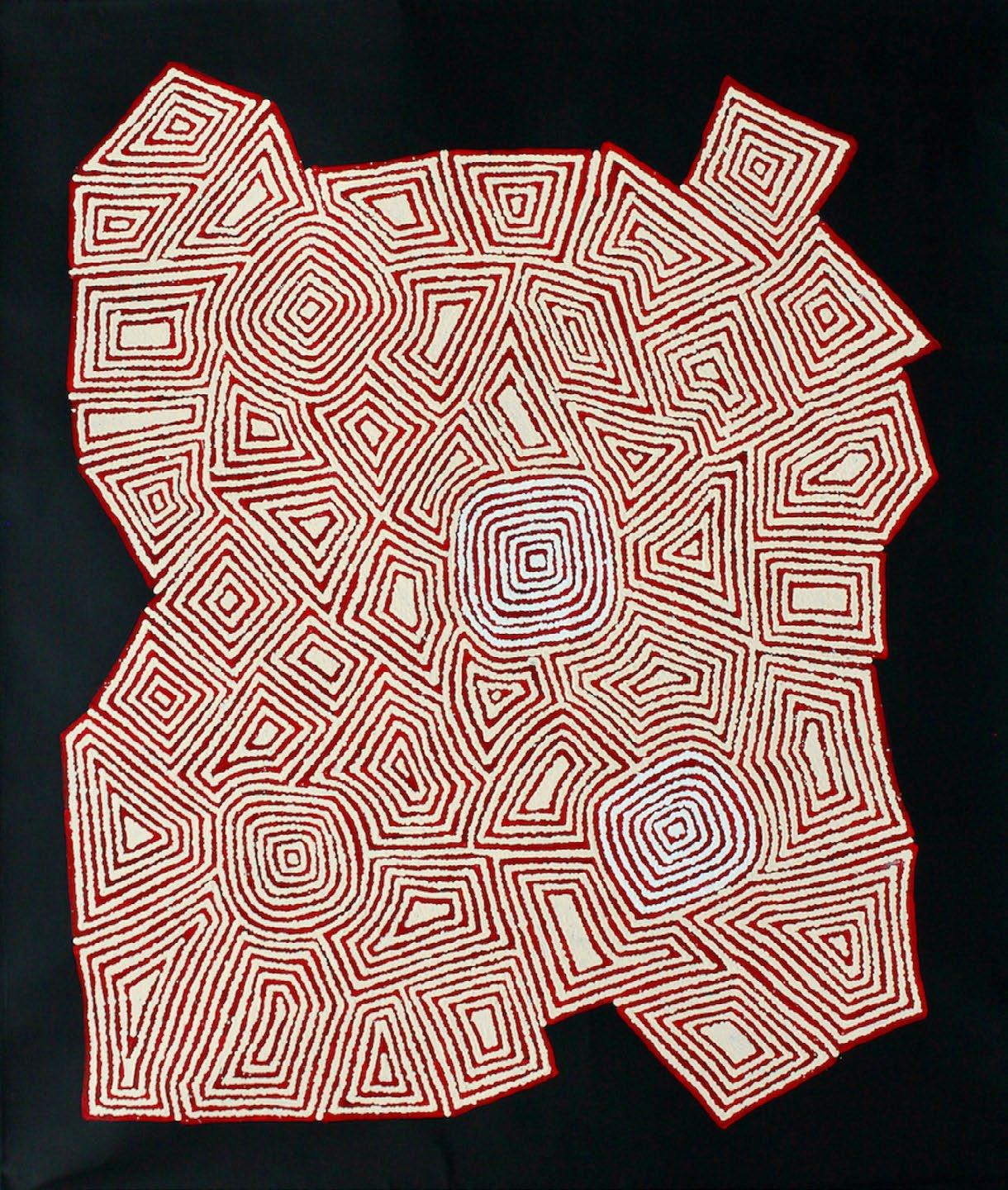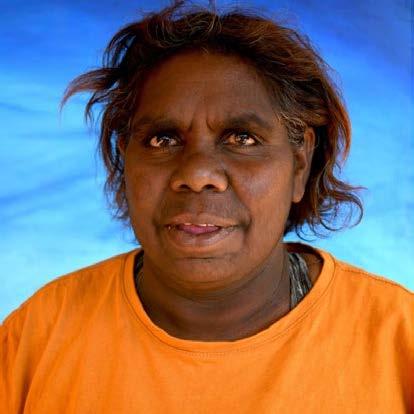
1 minute read
ValerieNapanangkaMarshall
Valerie has been painting with Warlukurlangu Artists Corporation, Yuendumu, a remote aboriginal, since 2001.
Warlukurlangu makes regular visits to Nyirripi to drop off canvas, paint and brushes for the artists and to collect finished artwork.
Advertisement
Sister of Cecily Napangka Marshall, Valerie Napanangka Marshall is a Warlpiri woman born in Alice Springs. Before her birth, her parents were living at Ltyentye Apurte Community, also known as Santa Teresa an Arrernte indigenous community about 80 kilometres from Alice Springs. Shortly after her birth the family moved first to Yuendumu and then to Nyirripi where Valerie now lives. Valerie attended Kormilda College, an Aboriginal boarding college in Darwin. After she finished school, she returned to Nyirripi. She is married and has four children.
Valerie paints her father’s dreamings which are related to her land, its features and the plants and animals that inhabit it. These dreamings have been passed down through the generations for at least 50 millennia. To depict her traditional Jukurrpa, Valerie uses traditional iconography, while developing a modern individualistic style to depict her traditional Jukurrpa.
When Valerie is not working at the local store or painting, she enjoys hunting with her family.
Valerie’s paintings in this exhibition all depict the lands and creation stories based around an important waterhole and natural spring called Pikilyi (Vaughan Springs). Located on Mount Doreen Station (above), Pikilyi is in the far west of the Northern Territory, adjacent to Lake Mackay off the Tanami Track some 450 kilometres northwest of Alice Springs.
Pikilyi is the home of two rainbow serpents, ancestral heroes who lived together as husband and wife. The woman ‘rainbow serpent’ was of the Napanangka skin group, the man was a Japangardi. This was a taboo relationship contrary to Warlpiri religious law.
Women of the Napanangka and Napangardi subsection sat by the two serpents, picking lice off them. For this service, the two serpents allowed the women to take water from the springs at Pikilyi. This was because the serpents were the ‘kirda’, or ceremonial owners, for that country. The spirits of these two rainbow serpents are still at Pikilyi today. This Dreaming belongs to the women and men of the Japanangka/Napanangka and Japangardi/Napangardi skin groups.

